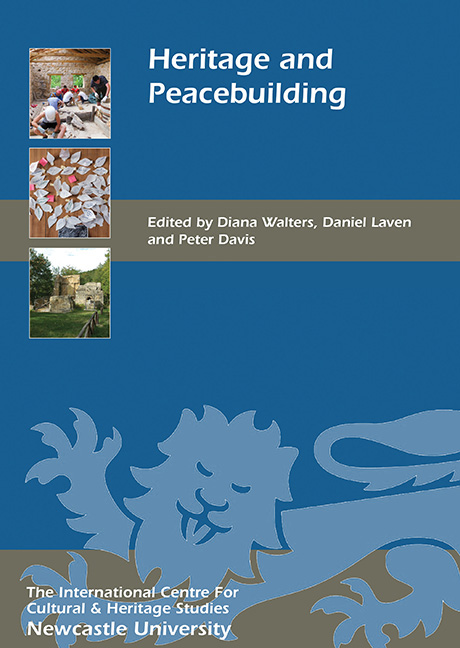Preface
Published online by Cambridge University Press: 16 February 2018
Summary
In December 2016, the ancient city of Palmyra fell, for the second time, under the control of the so-called ‘Islamic State’ – a group that includes in its arsenal of war the intentional destruction of cultural property. If they remain in control, we can expect further intentional damage at the site over the next weeks. At the same time Mr al-Mahdi, a member of the Islamic extremist group Ansar Dine, has recently been sentenced by the International Criminal Court to nine years imprisonment, for the intentional destruction of cultural property in Timbuktu. The destruction of cultural property has, once again, become an integral, deliberate, aspect of war.
The intentional and tragic destruction of cultural property during war begs obvious and important questions about the role of heritage as a resource for peacebuilding. Indeed, with on-going conflicts blanketing large swaths of Africa and the Middle East, along with the disturbing rise of exclusionary and extreme politics globally, understanding the relationship between heritage and peacebuilding has never been more important or urgent. While not much can be done in the heat of war to protect the loss of heritage, much more can and must be done to use heritage as a vehicle for peace. The chapters presented in this book begin to address this emerging role and the growing acceptance among heritage professionals of the need to engage with this responsibility. If we do not grasp this opportunity to show how heritage might be used to foster a culture of peace then it will be side-lined and ignored – or worse, used for overt political gain in ways that often promote violence.
At the end of the Second World War the international community came together to form both the United Nations and its constituent part, the UN's Educational, Scientific, and Cultural Organisation – UNESCO. The opening words of UNESCO's Constitution address head-on the part that education, science, and culture were expected play in the establishment of global peace: “Since wars begin in the minds of men, it is in the minds of men that the defences of peace must be constructed”.
- Type
- Chapter
- Information
- Heritage and Peacebuilding , pp. xii - xivPublisher: Boydell & BrewerPrint publication year: 2017



